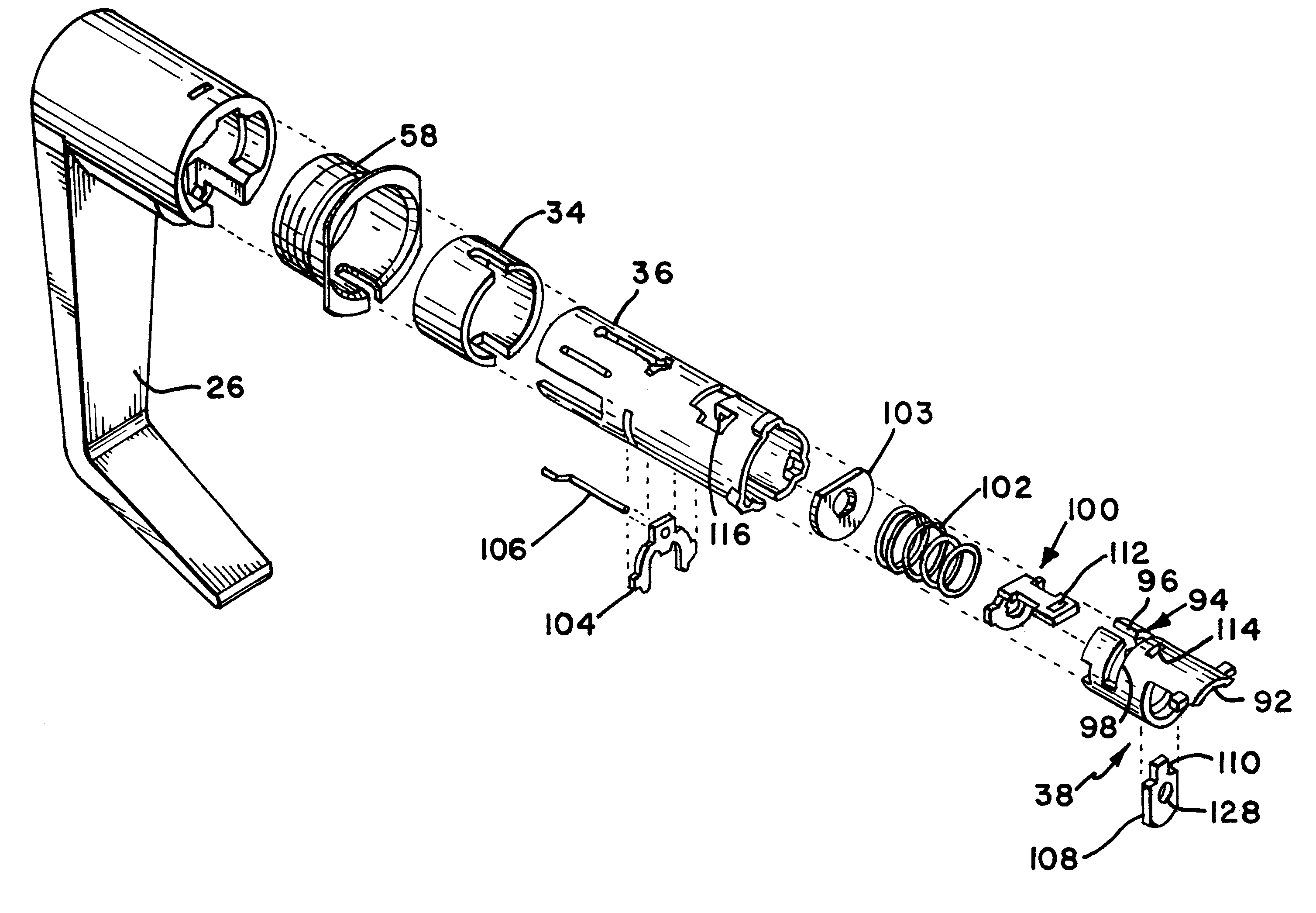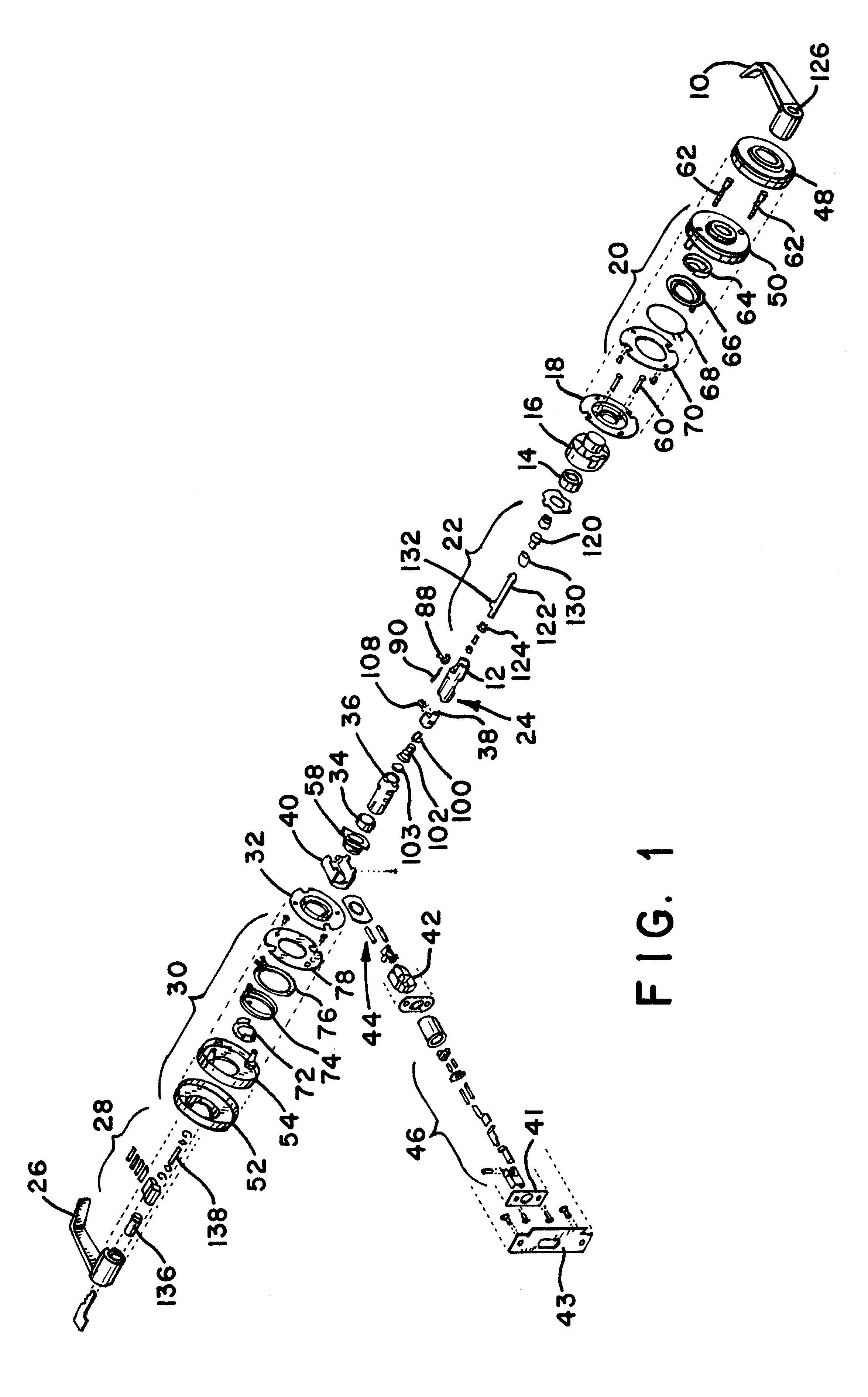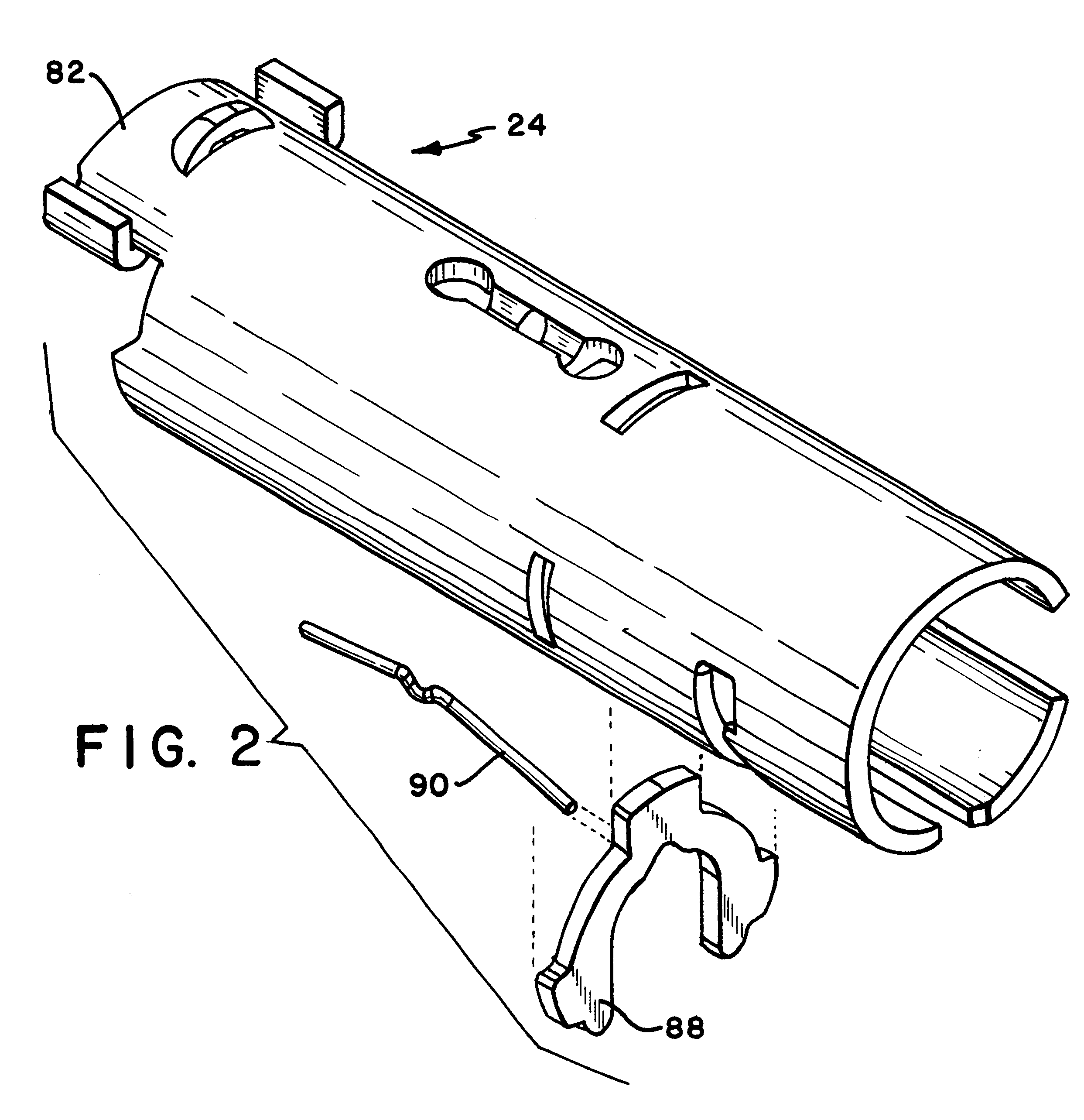Free-wheeling door lock mechanism
a free-wheeling door lock and mechanism technology, applied in the direction of mechanical control devices, keyhole guards, restricting/preventing/returning movement of parts, etc., can solve the problem of high cost of free-wheeling door locks previously developed, and achieve the effect of low cos
- Summary
- Abstract
- Description
- Claims
- Application Information
AI Technical Summary
Benefits of technology
Problems solved by technology
Method used
Image
Examples
Embodiment Construction
)
In describing the preferred embodiment of the present invention, reference will be made herein to FIGS. 1-6 of the drawings in which like numerals refer to like features of the invention.
FIG. 1 provides an exploded view of a free-wheeling lock incorporating a free-wheeling lock mechanism according to the present invention. The free-wheeling lock mechanism described generally includes an inner side and an outer side. The inner side includes those components that are on the inside of the door being locked, i.e., in the secure area, and the outer side includes those components that are on the outer side of the door, i.e., in the public area. Referring to FIGS. 1 and 2, the inner side of the free-wheeling lock includes an inner lever handle 10 connected to an inner spindle 12. The connection between the inner lever handle 10 and the inner spindle 12 is direct and rigid such that there is no relative motion between these two components, and any rotation of the inner handle rotates the i...
PUM
 Login to View More
Login to View More Abstract
Description
Claims
Application Information
 Login to View More
Login to View More - R&D
- Intellectual Property
- Life Sciences
- Materials
- Tech Scout
- Unparalleled Data Quality
- Higher Quality Content
- 60% Fewer Hallucinations
Browse by: Latest US Patents, China's latest patents, Technical Efficacy Thesaurus, Application Domain, Technology Topic, Popular Technical Reports.
© 2025 PatSnap. All rights reserved.Legal|Privacy policy|Modern Slavery Act Transparency Statement|Sitemap|About US| Contact US: help@patsnap.com



